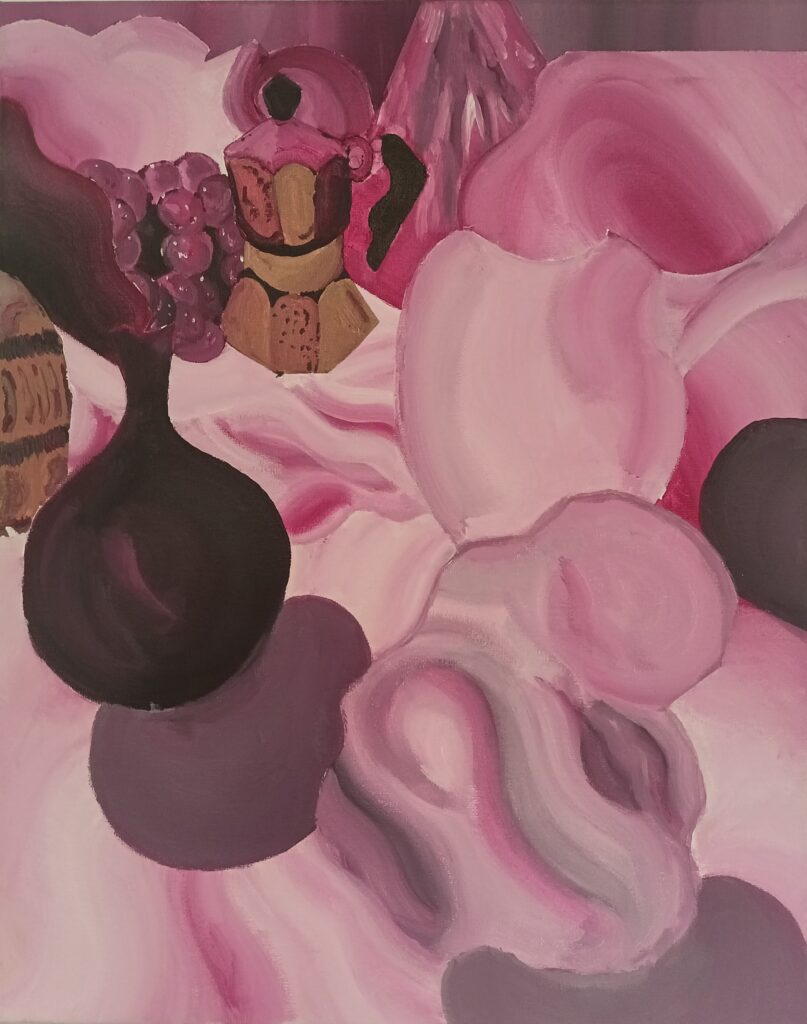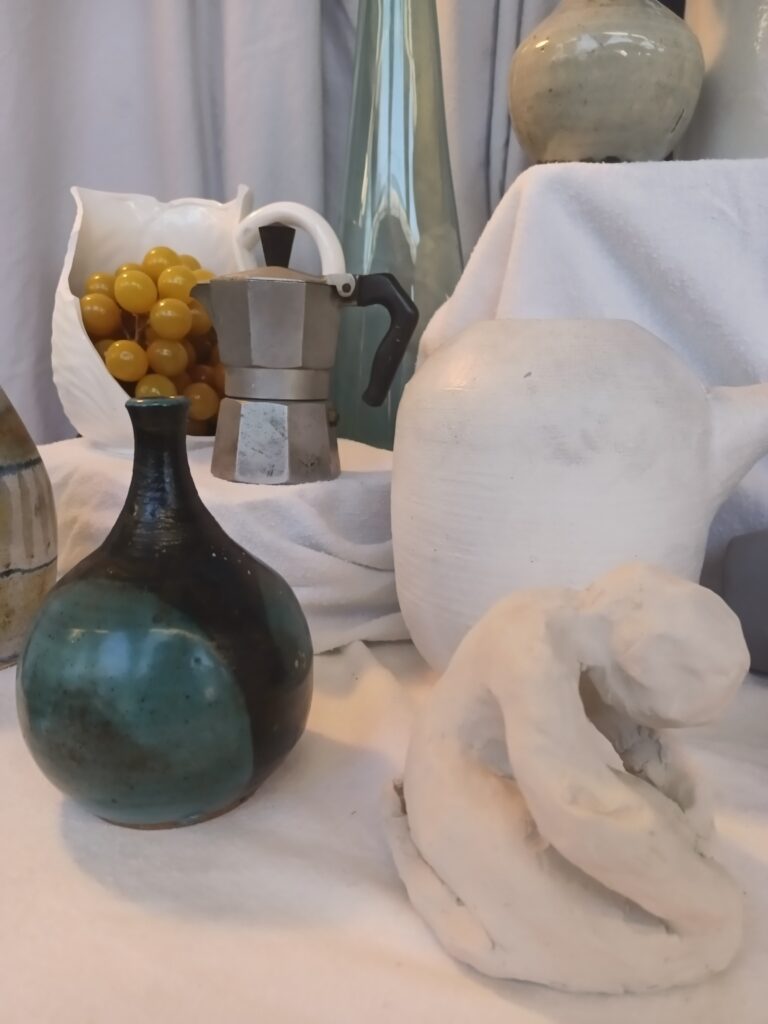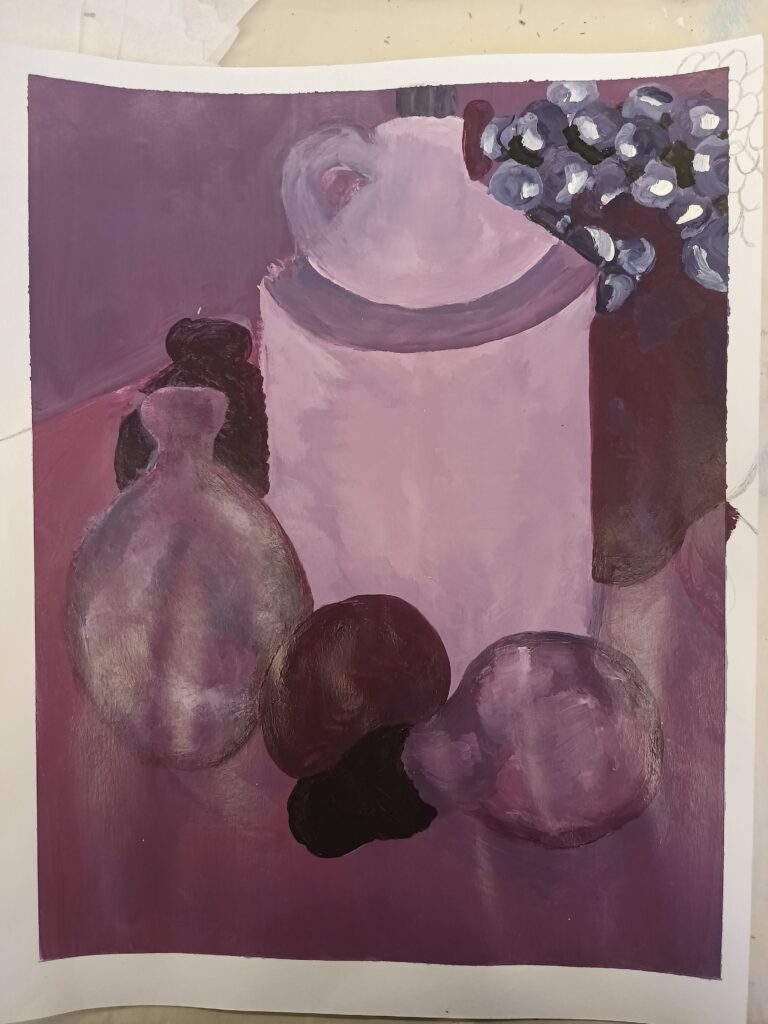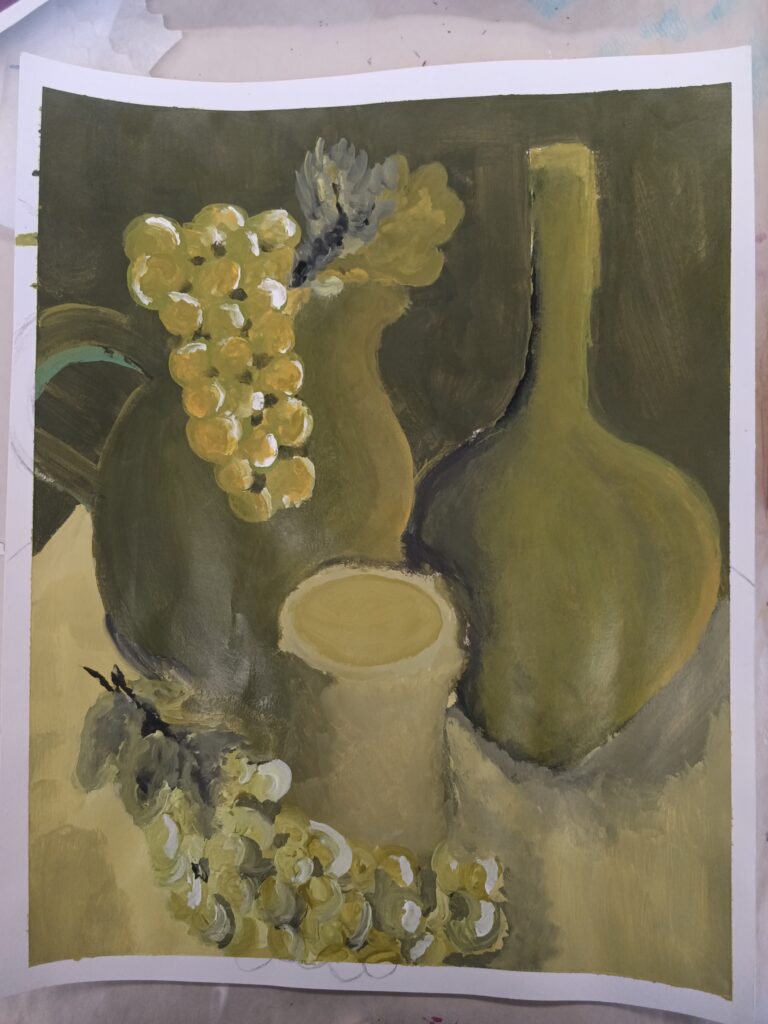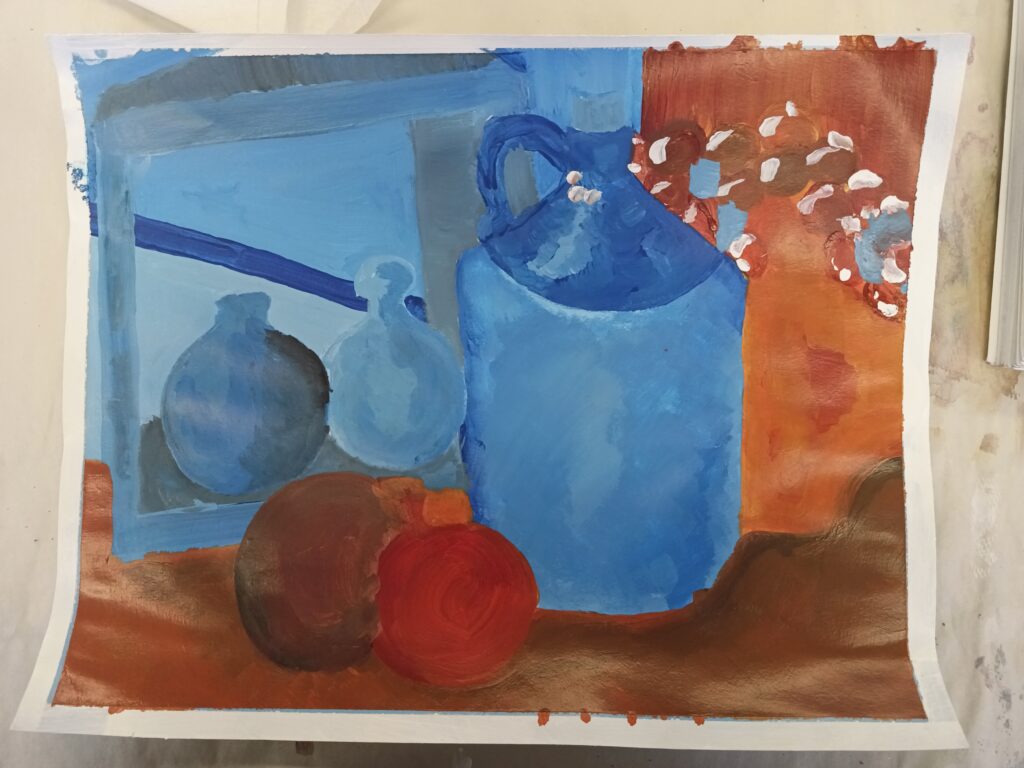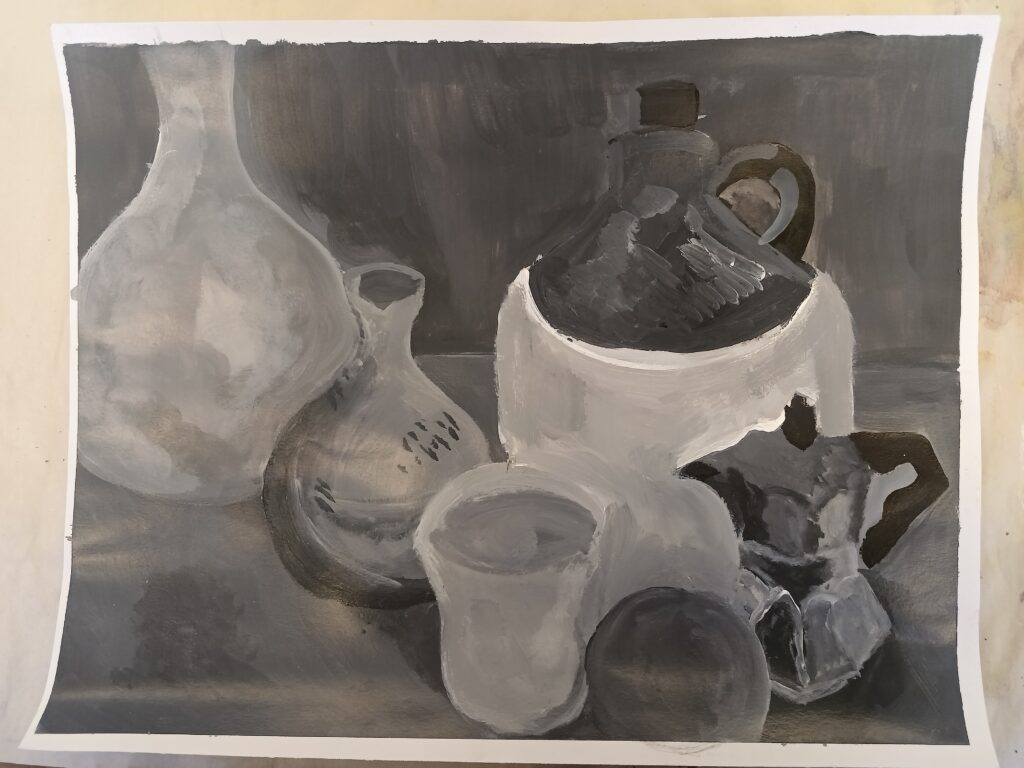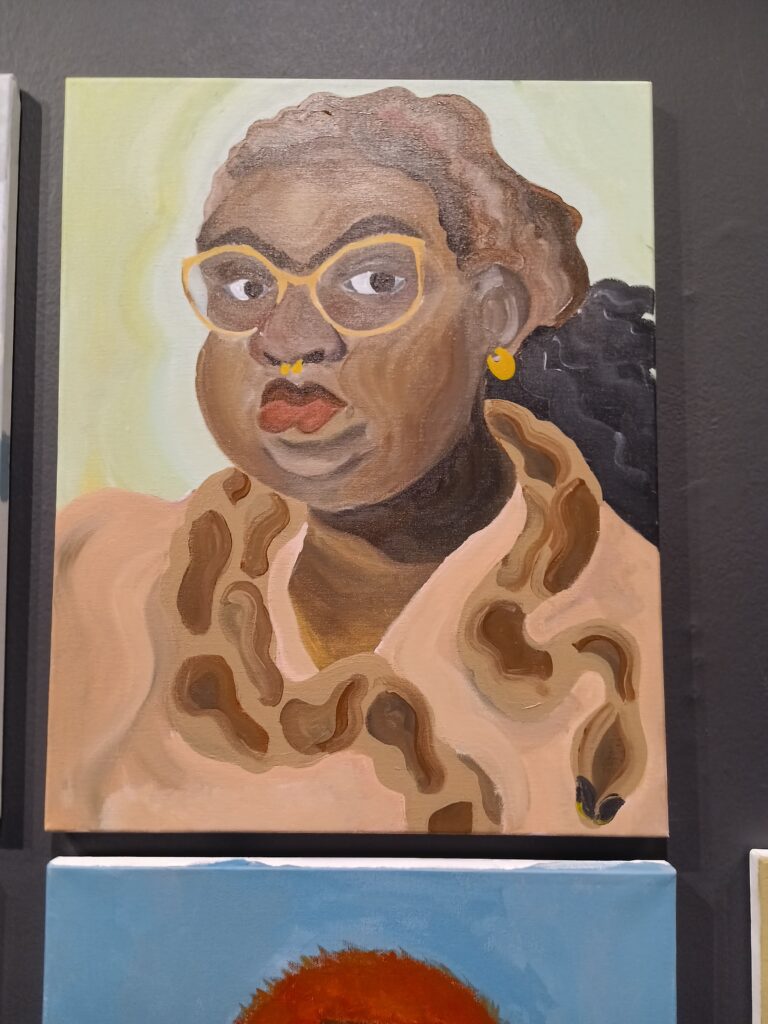
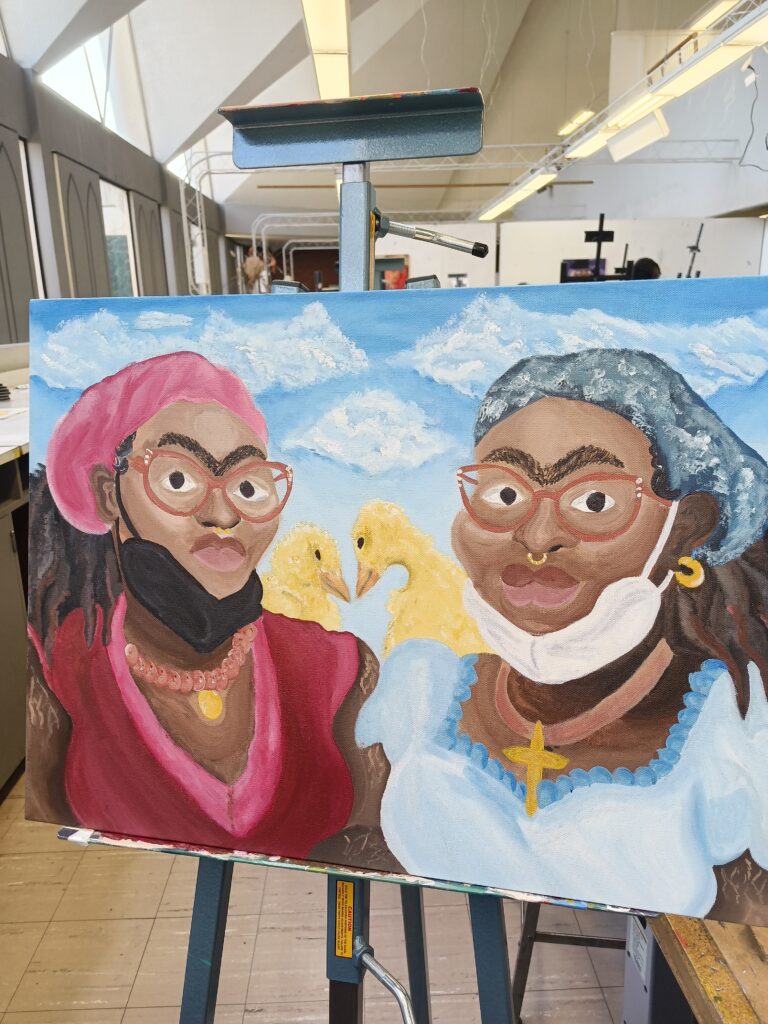
For my final paintings, I decided to make my self-portraits in the style of surrealist portraiture/still-life painter Frida Kahlo. I chose her style because I have always been fascinated with the realism of her portraits and the dream-like nature of her backgrounds. I wanted to focus on the aspects of her work that let people know that they’re viewing a work she created: the elongated neck, the tilted head with the forward facing eyes, the unibrow, and the nature-like background.
For both of my portraits, I lightly sketched out the idea in thin graphite, then painted it– starting with the background, then moving onto smaller and secondary subjects — the snake and the duck, then the skin and clothing and hair. As I was working on my paintings, I found myself blending warm and cool colors into my brown paint as often as possible, trying to get the correct shades of brown for my skin to show areas of highlight. This is my first time painting skin tones, and I wanted to incorporate my stretch marks, so this was an entirely new experience. I was also surprised at my ability to paint almost-realistic animals when I put in more work, as the ducks came out better than the snake.
If I could start over, I would redo my entire first portrait (left) to incorporate as much of the time and effort and do-overs that I put into the second portrait (right). When I was working on the first one, I found myself reverting back into using the same wavy brushstrokes on my skin that I used for my still-life painting, which made it look less realistic and less like Kahlo’s style.
